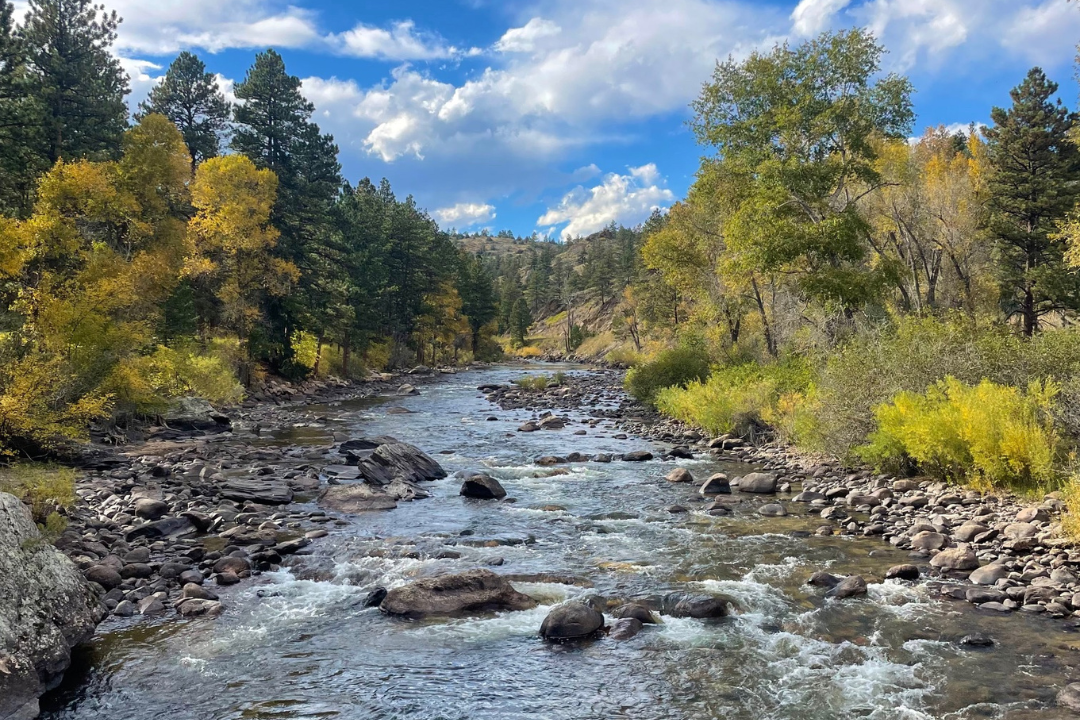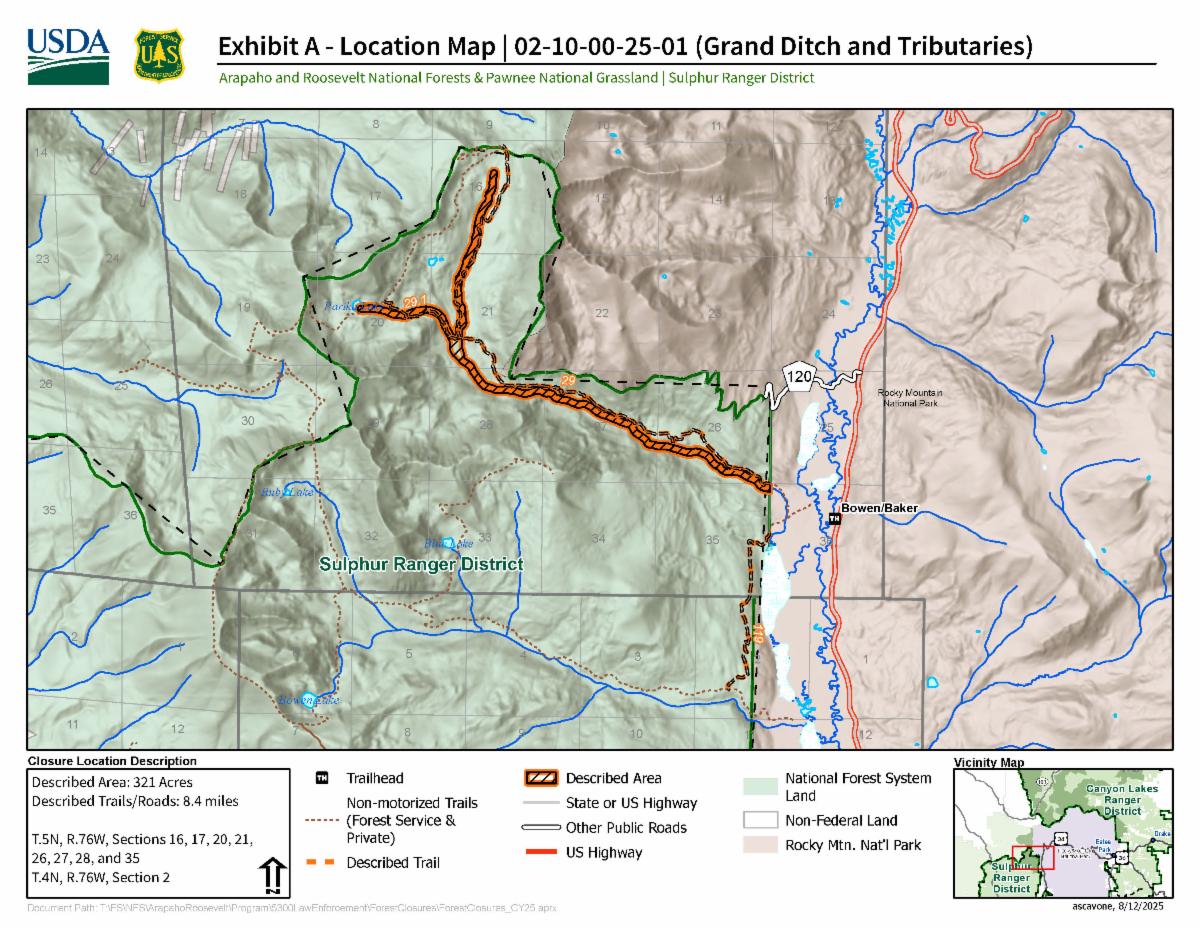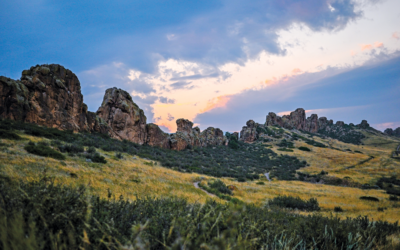Temporary closures to public access will be in place from Aug. 25-31, 2025, near the boundary of Arapaho and Roosevelt National Forests and Rocky Mountain National Park while a multi-agency coalition conducts non-native fish removal. This effort is a critical step toward restoring native greenback cutthroat trout to the headwaters of the Cache la Poudre River. The greenback cutthroat trout is Colorado’s state fish and is listed as federally threatened under the U.S. Endangered Species Act.
This effort is part of the Poudre Headwaters Project, a collaboration between the USDA Forest Service, Colorado Parks and Wildlife, Rocky Mountain National Park, U.S. Fish and Wildlife Service, the Bureau of Land Management, Colorado Trout Unlimited and Rocky Mountain Flycasters Trout Unlimited.
Due to the high level of activity during the implementation of this project, temporary closures will be in effect and include:
• Sulphur Ranger District Closures (Grand County): Baker Gulch Trail (#29), Baker Pass Trail (#29.1) from its intersection with Parika Lake Trail (#29.2) to the Baker Gulch Trail; Bowen Gulch Trail (#119) from the park boundary to the Bowen Gulch Connector Trail (#119.1); Parika Creek and Baker Creek with a 300-foot buffer; Baker Gulch and tributaries with a 300-foot buffer.
• Canyon Lakes Ranger District Closures (Larimer County): La Poudre Pass Creek downstream to the inlet of Long Draw Reservoir; designated dispersed campsites near Grandview Campground (posts 23-29) with buffers; Grandview Campground.
• Rocky Mountain National Park Closures: Portions of the Grand Ditch system, Colorado River Trail and all upstream/downstream tributaries in the project zone.
These areas will be closed to all uses, including hiking and fishing, during treatment dates. Signs and placards will be posted at access points. All treated water flowing out of the treatment area will be detoxified with potassium permanganate, an oxidizing chemical that is commonly used in drinking water treatment.
To remove non-native fish from targeted waters, biologists will use rotenone, an Environmental Protection Agency-approved organic compound commonly used by state and federal land management agencies. Rotenone is an ideal tool for this purpose given that it works quickly and breaks down rapidly in the environment. When applied it only affects gilled organisms such as fish and some macroinvertebrates, animals without backbones that are large enough to be seen without the use of a microscope, and they have been shown to rapidly recolonize treated stream reaches. Rotenone will not harm other species that use the creeks or that eat the carcasses of fish. In addition, rotenone does not persist in the environment.
For additional information about the Arapaho and Roosevelt National Forests and to see the closure maps, click here.
For Rocky Mountain National Park updates, visit nps.gov/romo or call 970.586.1206.
For questions on the rotenone application process, contact CPW Northeast Region PIO Kara Van Hoose at kara.vanhoose@state.co.us or Northwest Region PIO Rachael Gonzales at rachael.gonzales@state.co.us.








